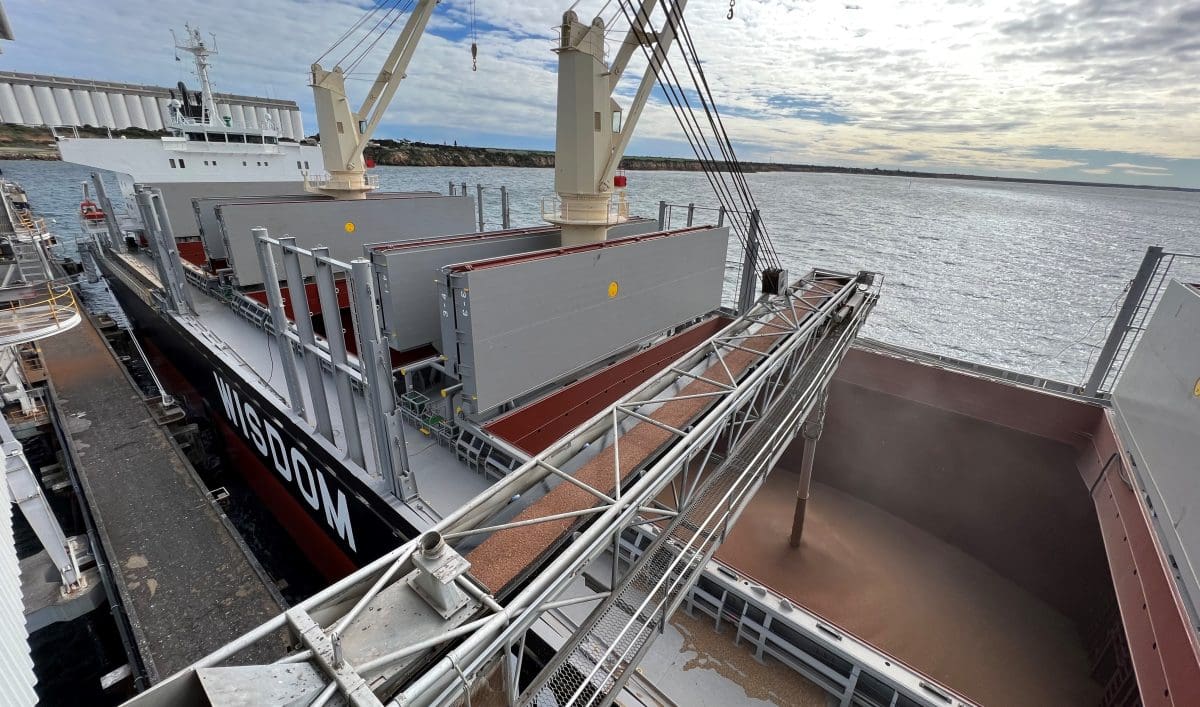Australia’s Grain Industry: Challenges and Opportunities for the Future

Australia regularly exports a total of 40-50Mt of grains, oilseeds, and pulses per annum. Pictured are lentils loading at the Port Giles terminal on South Australia’s Yorke Peninsula. File photo: Viterra
Australia has established itself as a global leader in grain production. In 2022, the nation achieved the notable distinction of being the world’s leading exporter of wheat. This achievement raises an important question: how can Australia enhance its grain supply to be even more affordable for both local and international consumers?
This pressing challenge will be the focus of a keynote address by Professor Ross Kingwell at the upcoming 2025 Australasian Agricultural and Resource Economics Society (AARES) conference, scheduled to take place in Brisbane. The conference, running from tomorrow through Friday, will be themed Meeting the Challenges of Transition to a Sustainable Future.
As an AARES Distinguished Fellow and the recipient of the 2024 Grains Research and Development Corporation Western region’s Seed of Light award, Professor Kingwell has made significant contributions to Australia’s grains industry. His insights will be essential in navigating the future landscape of grain supply in Australia.

Prof Ross Kingwell.
As the chief economist at Western Australia’s Department of Primary Industries and Regional Development and former chief economist at the Australian Export Grains Innovation Centre, Professor Kingwell is well-equipped to address the challenges and opportunities facing Australia’s grain supply chains. He emphasizes the critical need for coordinated actions among government and industry stakeholders to ensure that grain supply chains operate efficiently and effectively.
“It is a strategic imperative for the Australian government and industry to align their investments and policy measures to enhance the efficiency of grain supply chains,” Professor Kingwell stated. He notes that the ongoing upward trend in the production of grains, oilseeds, and pulses presents both challenges and opportunities for stakeholders throughout the supply chain.
“While we are fortunate to have a growing production volume, the efficient transportation and handling of this grain is a challenge that must be addressed. This is an opportunity for improvement for everyone involved in Australia’s grain supply chains,” he added.
Professor Kingwell outlines an actionable agenda that resonates with rural and regional Australia. This includes the need to reform regulations that govern road and rail transport, as well as to enhance port operations. Protecting transport corridors, targeting investments for road maintenance and improvements, and coordinating investments in rail infrastructure are also crucial. Additionally, he emphasizes the importance of assessing and rolling out automation and information-based technologies within the supply chain.
As challenges mount, the urgency for action becomes increasingly critical. “We are already witnessing limitations in supply chain capacity in certain regions, particularly in the movement of grain from farm to port,” he cautioned. Furthermore, many ports are constrained by their capacity to accommodate larger vessels, which can hinder export efficiency.
Many key infrastructure assets, such as bridges and roads, are aging and approaching the end of their functional lifespan, while issues of road damage and capacity constraints are becoming more pronounced. Additionally, bureaucratic hurdles and fiscal constraints faced by state governments complicate the situation, often limiting the potential for new investments.
Professor Kingwell also raises concerns regarding the flexibility of grain supply chains, particularly in light of Australia’s variable seasonal production. “In years of bumper harvests, it is imperative for farmers and bulk handlers to efficiently move large quantities of grain into storage. However, the diversity of grain types and qualities can complicate the receival process,” he explained.
Australia has been exporting between 40 million to 50 million tons of grains, oilseeds, and pulses annually, placing significant pressure on grain handling, transportation, and ship-loading systems. To secure favorable international prices, it is often necessary to export grain early in the year, before the Northern Hemisphere harvests come into play, which can diminish price premiums for Australian grain.
Failing to act on these issues threatens to increase the costs and inefficiencies within Australia’s grain supply chains, which could have detrimental effects on local food prices, export revenues, and farmers’ incomes.
Professor Kingwell is set to deliver his insights in a plenary session at 9 am on Wednesday, providing a clearer understanding of the actions required to meet these challenges head-on.
Source: AARES

